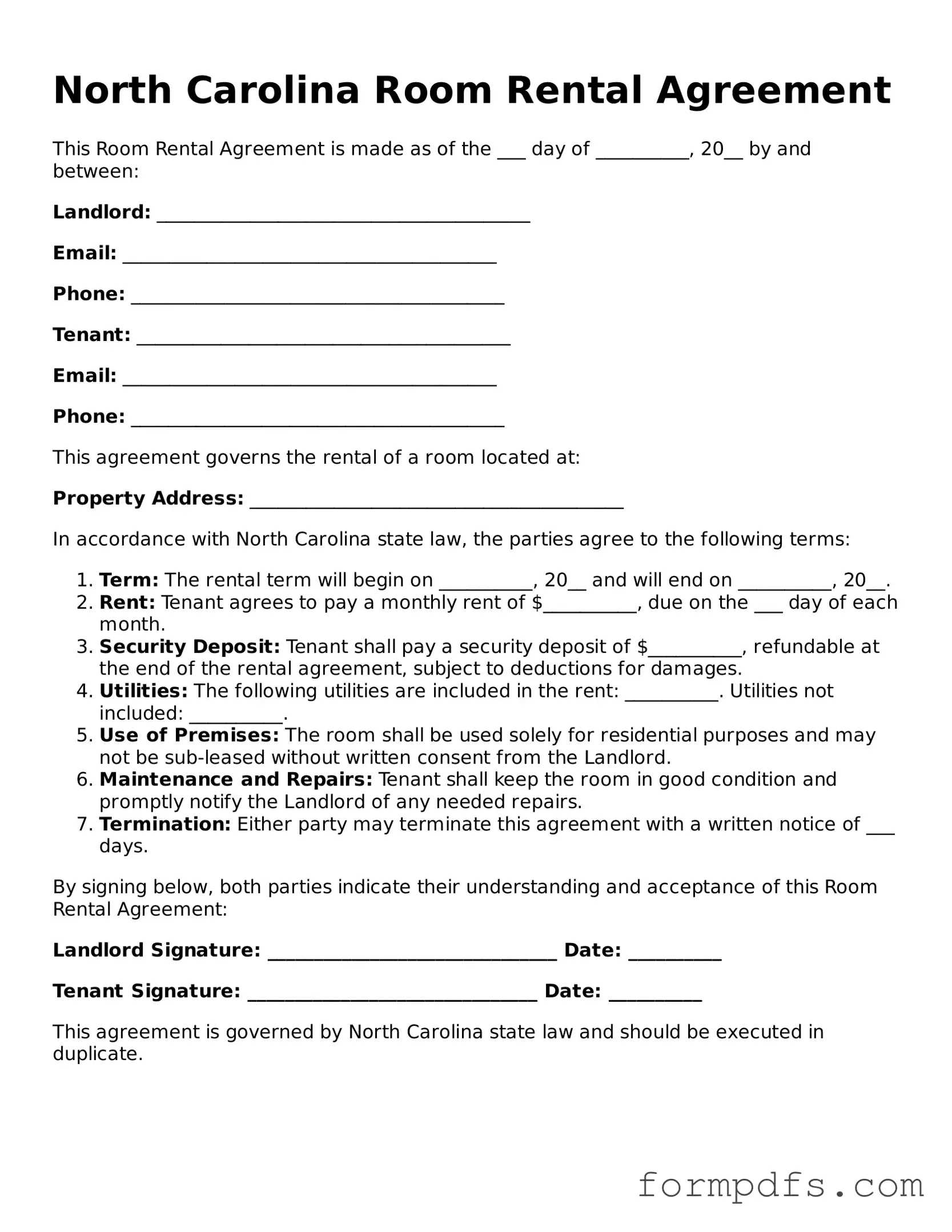What is a North Carolina Room Rental Agreement?
A North Carolina Room Rental Agreement is a legal document that outlines the terms and conditions between a landlord and a tenant for renting a room in a residential property. It specifies important details such as the rental amount, duration of the lease, and responsibilities of both parties. This agreement helps protect the rights of both the landlord and the tenant.
What should be included in the Room Rental Agreement?
The agreement should include essential details like the names of the landlord and tenant, the rental property's address, the rental amount, payment due dates, and the duration of the rental period. It should also outline rules regarding security deposits, maintenance responsibilities, and any restrictions on the use of the property. Clear communication of these terms helps prevent misunderstandings later on.
Is a security deposit required?
Yes, a security deposit is often required. This deposit serves as a financial safeguard for the landlord against potential damages or unpaid rent. The amount can vary, but it typically equals one month's rent. The agreement should specify the conditions under which the deposit may be withheld or returned at the end of the rental period.
How long is the rental agreement valid?
The duration of the rental agreement can vary based on what the landlord and tenant agree upon. It can be a month-to-month arrangement or a fixed-term lease lasting several months or even years. It’s important to state the exact start and end dates in the agreement to avoid confusion.
Can the agreement be terminated early?
Yes, the agreement can be terminated early, but specific conditions must be met. Both parties should agree on the terms for early termination, which may include notice periods and any penalties. The agreement should clearly outline these conditions to ensure both parties understand their rights and obligations.
What happens if one party violates the agreement?
If either party violates the terms of the agreement, the other party has the right to take action. This may include issuing a notice to remedy the violation or, in more serious cases, pursuing eviction or legal action. It is crucial for both parties to understand the consequences of violating the agreement to maintain a good landlord-tenant relationship.
Is it necessary to have the agreement notarized?
No, it is not necessary for a Room Rental Agreement to be notarized in North Carolina. However, having it signed in the presence of a witness or a notary can add an extra layer of protection and credibility. It is always a good practice to keep a signed copy for both parties.
